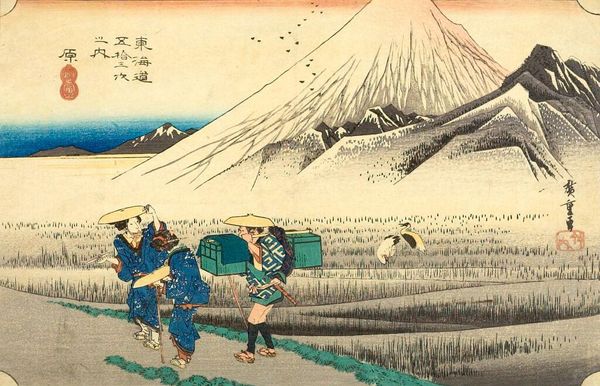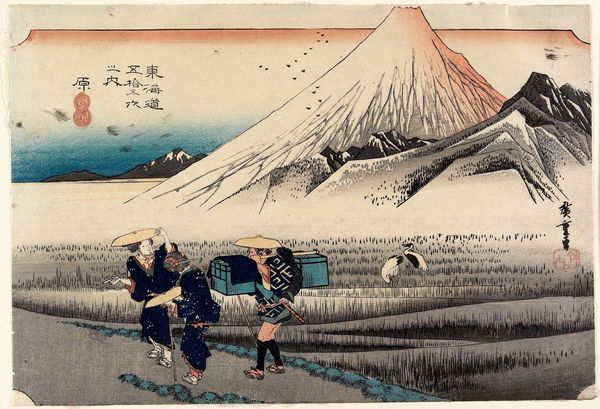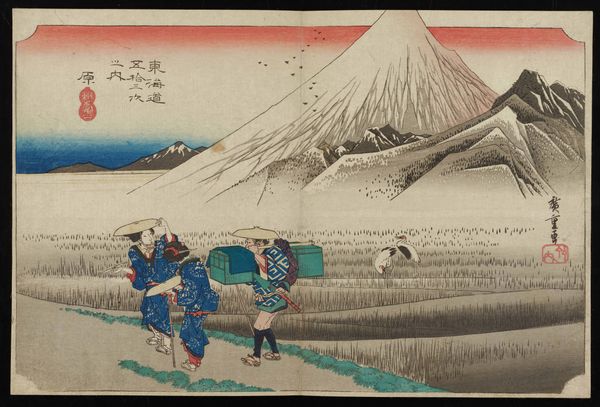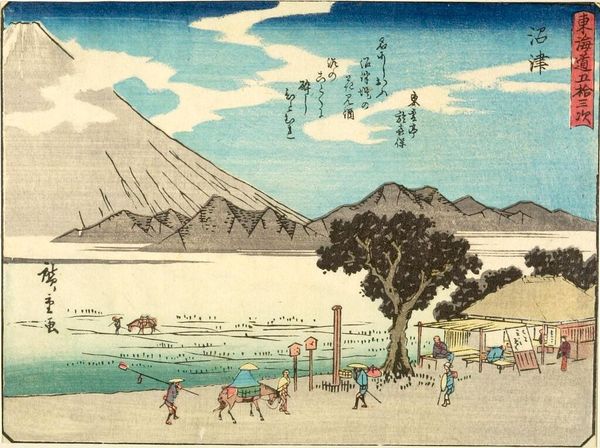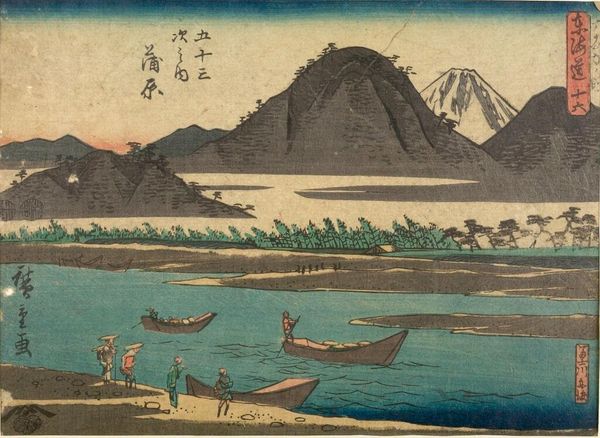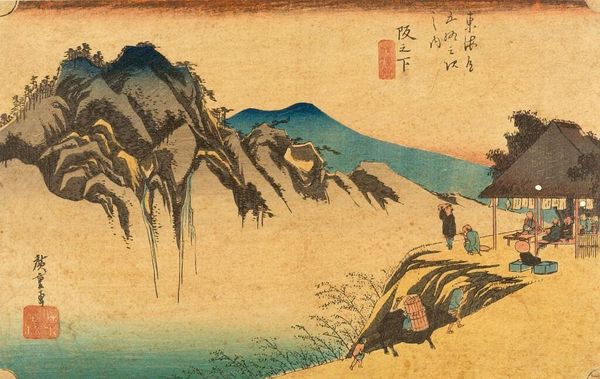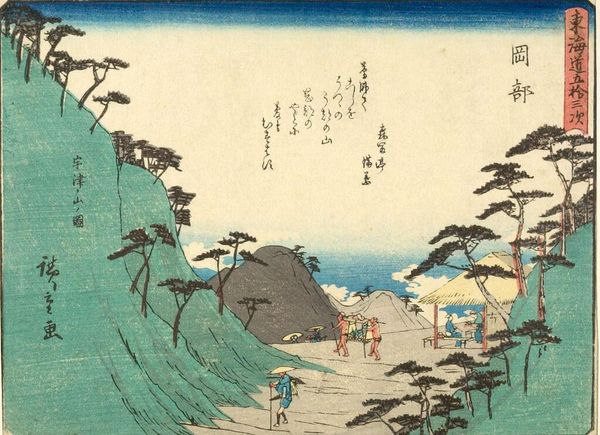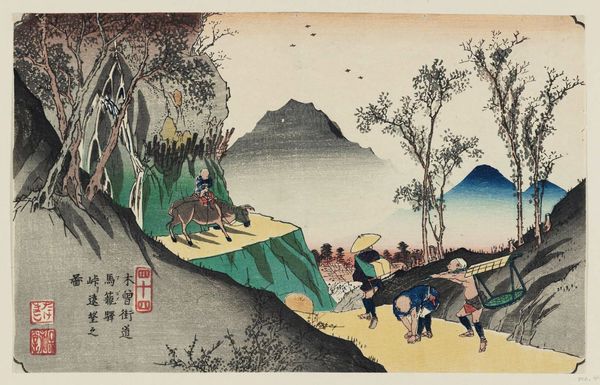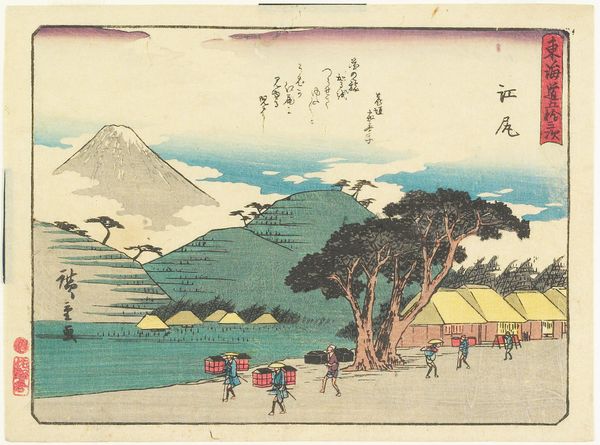
THE FIFTY-THREE STATIONS OF TOKAIDO "HARA ASA NO F UJI" c. 19th century
0:00
0:00
Copyright: CC0 1.0
Curator: Hiroshige's woodblock print, "Hara: Morning Fuji," transports us to one of the fifty-three stations along the Tokaido Road. Editor: It’s breathtakingly spare. The sheer size of Mount Fuji looming over those travelers evokes a powerful sense of human transience. Curator: Indeed. This work underscores the socio-political context of travel in Edo-period Japan, particularly the mandated journeys of feudal lords to the capital. The road wasn't just a route, but a site of control, commerce, and cultural exchange. Editor: And the recurring motif of Fuji? It serves as a national symbol, a spiritual beacon, grounding the travelers and the viewer in the landscape and in Japanese identity. Look at how that image is almost ubiquitous. Curator: Precisely. This print prompts questions of power dynamics, gender roles, and the very act of seeing in a structured society. Editor: I agree. Reflecting on this print's symbolism next to those themes you have suggested gives me much to consider.
Comments
No comments
Be the first to comment and join the conversation on the ultimate creative platform.
